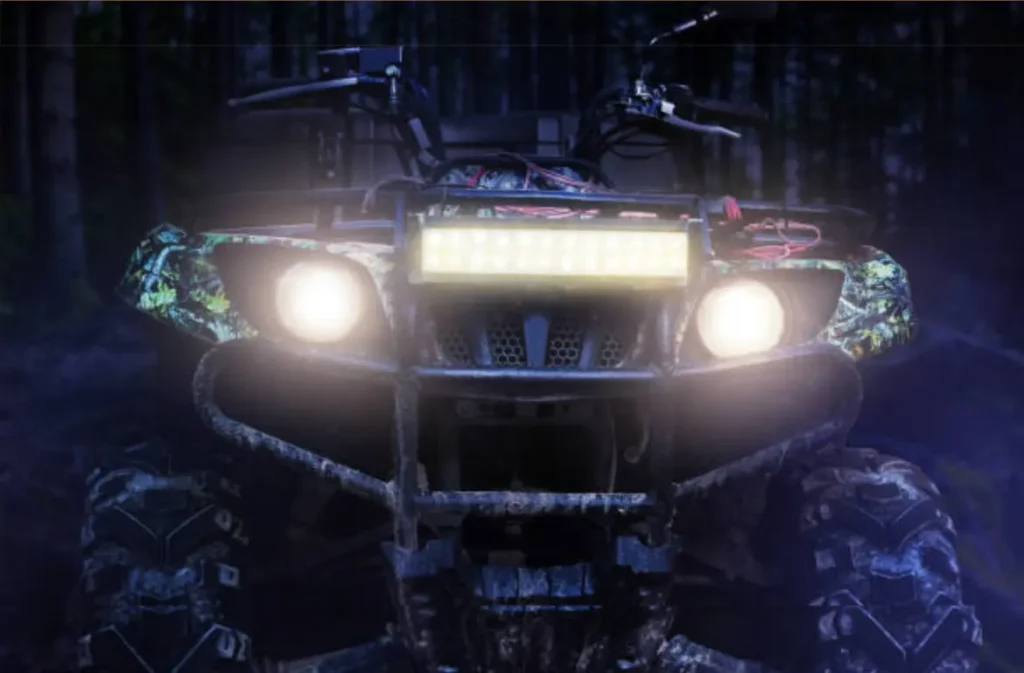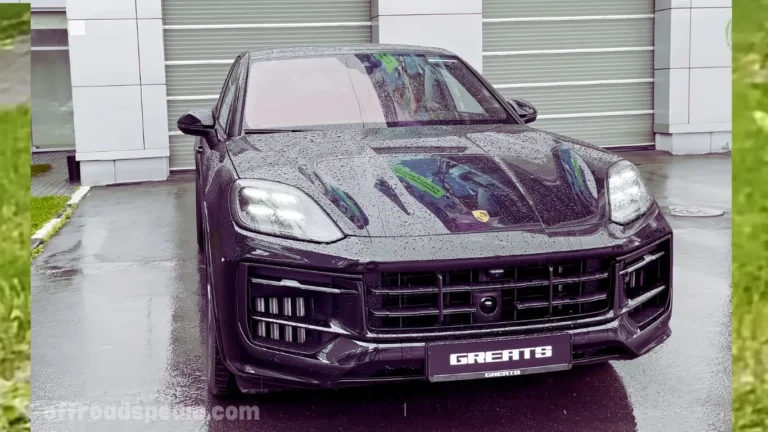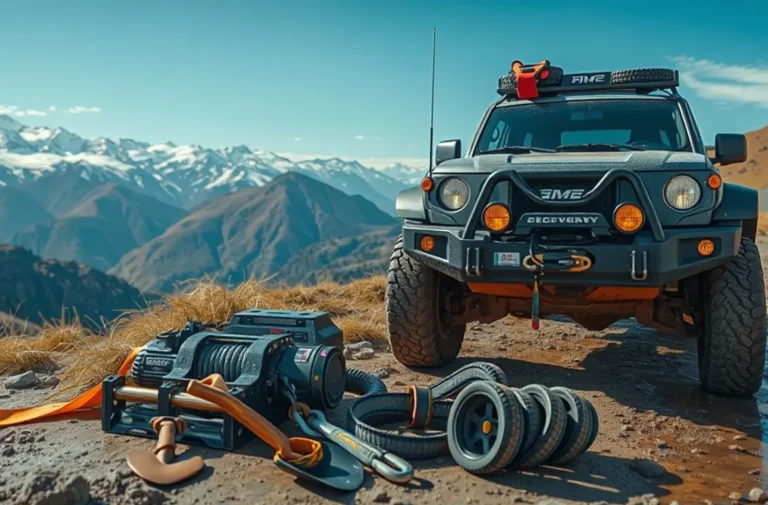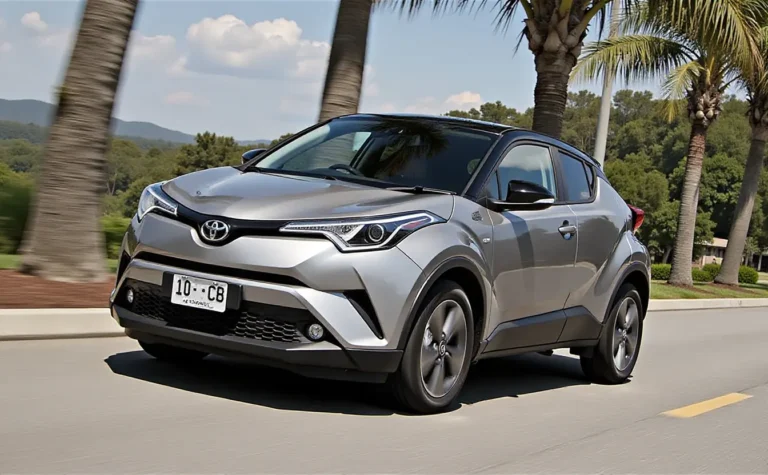Off-Roading Driving Tips and Safety
Off-roading is one of the most thrilling ways to experience the great outdoors.
Every adventure is different in terms of how exciting and challenging it is. Some adventures involve riding on rocky trails, others through mud, and others over dunes. It’s impossible to describe how free you feel when your car leaves the paved road, and the only things that can stop you are the environment and your skills. Off-roaders who have done it before know that with great adventure comes great duty.

This blog is about the most important off-road vehicle tips and tricks everyone should know, from newbies to seasoned pros. These tips will help you have a fun, safe, and respectful off-road trip. For example, they will teach you how to use the trails properly, how to deflate your tires for better grip, and when to give the right of way. Put on your helmet, and let’s go!
What is Off-Roading?
Off-roading means driving a car on roads that aren’t built or established. In other words, you’re not on smooth roads. This includes mud, snow, dirt, and sand, but not just those. It’s too bad that not all vehicles can handle going over rough terrain. You’ll need a particular car with the right tires and equipment to get through these rough areas.
Types of Off-Roading
- Hill Climbing
- Rock Climbing
- Mudding
- Water Fording
- Green Landing/Overlanding
- Cross Country
- Dune Bashing
- Desert Riding
- Snow Wheeling
- Raiding/Rallying
What Equipment Do You Need for Off-Roading?
Off-roading, like other types of trips, needs a lot of different gear. We’re talking about safety gear, lights, tires, and gear for getting back on the road.
We’ve put together a list of all the important off road vehicles gear to help you get started.
Tires:
The size of the wheels, as well as the tread design and type of construction, have a significant effect on how well they work off-road. Off-road tires are more expensive than tires that are used on roads. Generally, you should pick a wheel width that is half the tire’s height. How high is your tire? Measure it from the bottom of the tire to the very top of the wheel.
When you go off-roading, you should also consider the wheel offset and backspacing. This is the distance between the mounting hub and the wheel’s axis.
Recovery Gear:
Off-roading isn’t always safe, and bad things can happen at times. That’s why it’s always a good idea to have healing gear. When used with a second car, this gear can help your off-roader get out of a jam.
An off-road rescue kit consists of a couple of shackles and a snatch strap. Snatch straps can be stretched up to 20% and are useful for removing cars from holes and ditches.
There is also a winch that you can hook your car up to if that doesn’t work. The winch is like a spool of strong rope or wire that you can turn to get your car out of the hole.
Lights:
Lights are the only way to guide you when you drive at night. They’re not just your head or tail lights, either. Those are things you’ll need. On the other hand, you should also keep a battery-powered emergency light that can help you while camping and when fixing your car.
Some things to look for in these lights are how long the battery lasts, the different brightness levels, and the shape of the beam. Beam shapes are especially important for off-roading.
It follows four main patterns:
Flood
Spread
Spot
Driving

Emergency Gear
Emergency gear is a broad term that includes repair kits, communication devices, and air compressors. Stock up on toolkits for fixing engines and tires and a helpful book with pictures of how to fix different problems.
A regular cell phone or a radio device should always be with you. Also, have air tools on hand if you need to change the tire pressure or fix a flat. Information about yourself, like your medical records and ID, should always be in your wallet.
A regular cell phone or a radio device should always be with you. Also, have air tools on hand if you need to change the tire pressure or fix a flat. Information about yourself, like your medical records and ID, should always be in your wallet.
You should always have these things with you in case of an emergency:
- Jack and spare tire
- Tow strap
- Protecting trees
- Kit for fixing engines
- Repair and training manual for vehicles
- Compressor for air
- A fire extinguisher or blanket GPS or another way to find your way
- Cell phone and SOS signal sender
- Information about you or your health
- A few extra flashlights
- Flares, beacons, and other things used for signaling
- Extra keys
Remember that all of this is on top of your healing gear.
Other Useful Things You Can Take
Air Compressor for Travel
You can use an air compressor to pump up or press the tires. Since you’ll be getting flat tires often, especially when rock climbing, it’s a good idea to bring a small tire compressor.
The compressor can also change the pressure in your tires based on the trail they are on. Some people like tires with less pressure because they can bend better around objects.
Suspension
A sound suspension system is important if you drive over rough rocks and up steep hills. We won’t be able to list all kinds of bans here. Even though your four-wheel-drive has a built-in frame, you should improve it if you want to go on a rougher course.
Snorkel
Some snorkels are made for cars, even though this might not make sense in this situation. They let air flow through the car and cool the inside, but only up to a certain point.
People often trip and fall while water fording, so these come in handy. You should also get your snorkel because you might need to get out of the car if it starts to leak.
First-Aid Kit
You must do your medical work if you want to go off-roading miles from the closest hospital. Sure, no one wants you to sew yourself up. But having simple things with you like a temperature, Band-Aids, and a tourniquet could save your life.
Fire Extinguisher
If you work your engine too hard, fires can start anytime. It is always a good idea to carry a fire extinguisher. Before you go on your trip, learn how to use one and practice. Also, ensure the driver’s seat can reach the fire extinguisher.
Don’t Forget Water and Food:
Bring a lot of Water and Food with you. Bring healthy food with you if you’re going camping because you might be out for days. So, no fast food or bags of chips. Bring full meals with you. It’s best to bring canned goods because they don’t need to be cold. You should get a lot of water bottles and maybe even a small cooler to keep your drinks cool on the way.
How dangerous is driving off-road?
It’s common knowledge that off-roading is risky. Yes, it can be many times. No one said it had to be, though. Off-road can be a fun and exciting sport that even people who have never done it can enjoy.
There are, however, mistakes. The Consumer Product Safety Commission (CPSC) says that ATVs are responsible for an average of 622 deaths yearly (sites may use cookies). About a quarter of those deaths are of children younger than 16 years old. Furthermore, one-third of all injuries are usually to the head or neck, which can be fatal.
It depends on the road and your driving skills. You must wear safety gear and buckle your seatbelts for a safe off-road adventure. Always go with a friend who can help you get out of trouble.

How to Talk on the Trail
Off-road safety and good manners depend on being able to talk to each other. Whether going through a tight pass, getting close to a moving vehicle, or dealing with rough terrain, letting other drivers know what you plan to do can help avoid crashes and confusion. A simple hand signal, a friendly horn honk, or flashing your lights can help everyone understand what you mean.
When you get close to another car on the trail, especially where it’s hard to see, use these signals to let them know whether you want to yield or need ahead. One way to show that you’re giving way is to wave or nod your head quickly. With two-way radios, you can stay in touch with other people in your group and make sure everyone knows what will happen next.
Learning How to Behave Off-Road
You and your car aren’t the only ones on the trail; the whole off-road community is there.
Follow the trail rules to ensure everyone stays safe and has a good time. To start, off-roaders should follow the trail, help each other out when needed, and be aware of their environmental impact. You should treat other people and the trail the way you’d want to be treated. This is the “golden rule” of off-roader.
How to Get the Right of Way
Right of way is more than being polite when off-roader; it’s also about safety. Most of the time, cars going uphill have the right of way. Why? Since stopping makes it harder for them to move again.
Bigger cars also usually have the right of way over smaller ones because it’s harder for smaller cars to get through tight spots. Communication is very important. Use hand signs or a quick honk to let people know what you want to do. Don’t forget that being patient is very important on narrow paths!
Mud, Sand, and Snow
- You can improve your traction and grip by gradually inflating your tires, increasing their footprint.
- Maintain a constant speed throughout.
- To get back on track in sand or snow, gently depress the throttle if you feel the wheels spinning. Keep the wheels turning in muddy conditions to keep the driving tires clean of muck.
Pebbles, Lakes, and Dirt
- Take an angled approach to the obstruction; with one wheel engaged, you may keep the other two firmly planted on the ground for traction.
- To keep the truck’s undercarriage in good repair, you should drive over obstacles by putting one tire on and then carefully moving the remainder of the vehicle over it.
Slopes and Hills
- The vehicle tackles hills head-on, distributing weight uniformly and ensuring all four tires have equal traction.
- Move up a gear. Having the gear set too low can lead to tire spin. Too high, and you won’t be able to produce enough electricity.
- You should always have a backup plan if your ascent doesn’t go as planned.
Respect the environment and don’t leave any signs.
When you go off-roading, “leave no trace” is one of the most important things to remember. Many people may never get to see these places. Because we have that luxury, we must protect these environments for future generations. Having a “leave no trace” attitude isn’t just about following the rules; it’s also about ensuring the trails and wilderness we enjoy will stay open, clean, and available for years to come.
Stay on Designated Trails
Off-road paths are carefully chosen and managed to balance nature and adventure. By staying on marked trails, you help the environment and keep the off-roading experience alive for other people. However, going off the road can harm already weak ecosystems, cause erosion, and bother wildlife in the area. In some places, the tire tracks of just one car can damage the land so severely that it may take years to heal.
If you go off the trail, you might get stuck in uncharted territory or damage your car, which is not the goal. Also, trailblazing in places that aren’t supposed to have it can lead to closed or limited trails that affect everyone in the off-road community. By following well-marked trails, you can help protect the environment and keep routes open for everyone to use.
Put what you pack in and take it out.
One important part of the “leave no trace” concept is to leave the trail better than you found it. In other words, you must pack everything you bring in, from snack wrappers to extra parts. Small things like bottle caps and cigarette ends can damage the environment if left behind.
You should bring more trash bags so you can pick up any trash you find along the way. This not only helps keep the trails clean, but it also shows others how to do it right. It’s a small way to show appreciation for the places that make us happy.
Avoid Disturbing Wildlife
When you go off-roading, wildlife can be found in many different places. Respecting these animals and their homes is very important to keeping the environments we study in balance. Stay away from animals, don’t make too much noise, and be careful where and when you drive, especially during sensitive times like mating or breeding seasons.

Also, never feed animals human food because it can hurt them and change how they usually look for food. It is seeing wildlife from a distance. However, you should do this not to hurt the animals or their environments too much.
Tread Lightly in Sensitive Areas
Off-road cars can damage wetlands, deserts, and forests. Be extra careful to have as little of an effect as possible in these sensitive places. For instance, don’t drive over plants in sandy or dry areas because they might not grow back for years. Stay away from tree trunks and roots in wooded regions; even small damage can have long-lasting effects.
If a road is wet or muddy, you might want to turn around or pick a different path. Driving through thick mud or water can damage the trail so much that it can’t be used by anyone else. Always think about how your car affects the ground and make decisions that put the environment’s health first in the long run.

The public and Resources Off-Road
Joining a group or club for off-road driving
You can learn from off-roaders with more experience and have a group of people to help you tackle tougher trails and find new experiences. Off-road groups in your area often put on events, trail rides, and workshops where you can meet other off-road enthusiasts and improve your skills.
Learning from Off-Roaders with Lots of Experience
When it comes to off-roading, there’s no way around having experience. Learning from experienced off-roaders can give you valuable tips and tricks that you won’t find in a book. You can do this through online groups, guided trail rides, or hands-on workshops. YouTube videos, off-road classes, and trail guides are all great ways to learn more about driving and feel more confident behind the wheel.
FAQs of Off-Roading
In The End
Off-roading is fun. These days, however, the trip will be more personal, peaceful, and relaxing because of the recent pandemic that has spread around the world. The car and other tools are two things that go into the hobby. But once you know how to do all that, riding on the quiet cross-country tracks will be a lot of fun. It’s not complicated. Because it is done on smooth roads, you don’t need to learn many new driving skills.







